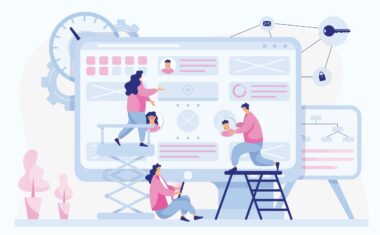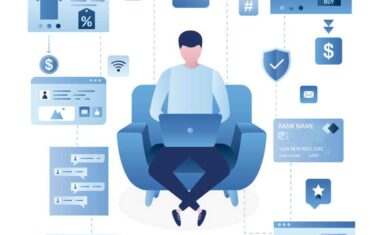What Is Digital Design and Why Is it Important?
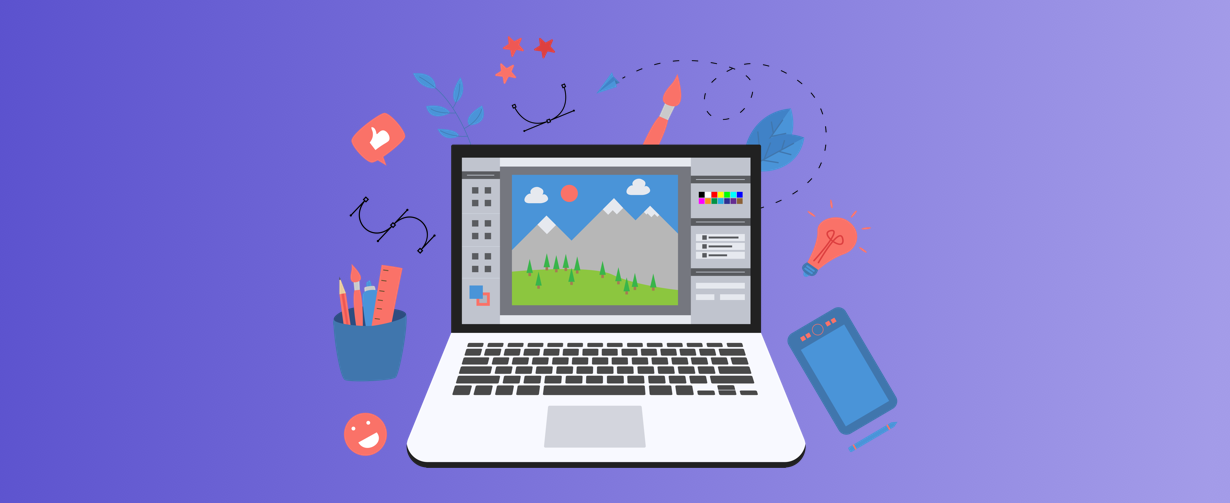
In this article

Digital design is a general term that is more relevant now than ever before. Put simply, any kind of design that appears in a digital format (on an app or website), rather than in print (on a physical page), is considered digital design.
On Quora, user Retika Gore gives a concise digital design definition:
“Digital design refers to what is created and produced for viewing on a screen.”
In an increasingly digitized world, it’s likely that as a designer, you will be working quite a bit with digital design. Whether you’re a UX designer or a graphic artist, understanding the specifics of designing for digital platforms will help you take your career to the next level.
Digital vs. Print Design: How Are They Different?
At first glance, it may seem as though digital design and print design are very similar. However, there are some crucial differences to keep in mind when designing for these two types of media.
Different Kinds of Deliverables
Since digital and print designs appear in different places, it is up to designers to familiarize themselves with the types of deliverables they may be asked for.
Among other things, digital designers may create:
- Banner ads
- Infographics
- Website elements
- UX wireframes
- Graphics for reports and white papers (PDFs)
Print designers would be more likely to create:
- Brochures
- Magazine spreads
- Book covers
- Business cards
- Print ads
If you are interested in a career as a digital designer, it’s a good idea to read up on the types of projects you might be working on. Some digital projects, such as banner ads, have industry-standard formats:

A chart showing standard formats for web banner ads. Source: Wikimedia Commons.
Other projects require specific skills that go beyond general design knowledge. For example, when creating an infographic, it’s helpful to consider how to visually represent data in a way that is appropriate for online viewing.

An infographic with information about best practices. Source: Daniel Zeevi, Flickr.
The Role of Analytics in Digital Design
Another thing that makes digital design different from print design is the role of data and analytics.
While it might be difficult to directly track the performance of a physical flyer or brochure, in the digital realm you have direct insight into your design’s performance through metrics such as likes, shares, downloads, and pageviews.
As a digital designer, you might find yourself accountable for creating high-performing designs. This means that, beyond just creating an attractive visual, you will need to keep in mind your desired audience and how to capture their interest. In some cases, you may be asked to test several different iterations of a design to see which one performs the best (this is known as A/B testing).
Related: What Is Digital Media and How Can It Help My Career?
Interactivity in Design
Digital design is also different from print design because it is interactive.
Not all types of digital design are interactive. In some ways, an infographic plays much the same role as a poster—it’s a static image. However, when it comes to web design, users are often dragging, dropping, and clicking on the elements you create.
Interactive design is more complex than static design. Beyond being aesthetically pleasing, your design will also have to be usable—this is the focus of UX designers (more on them in a bit).
Related: What is UX Design?
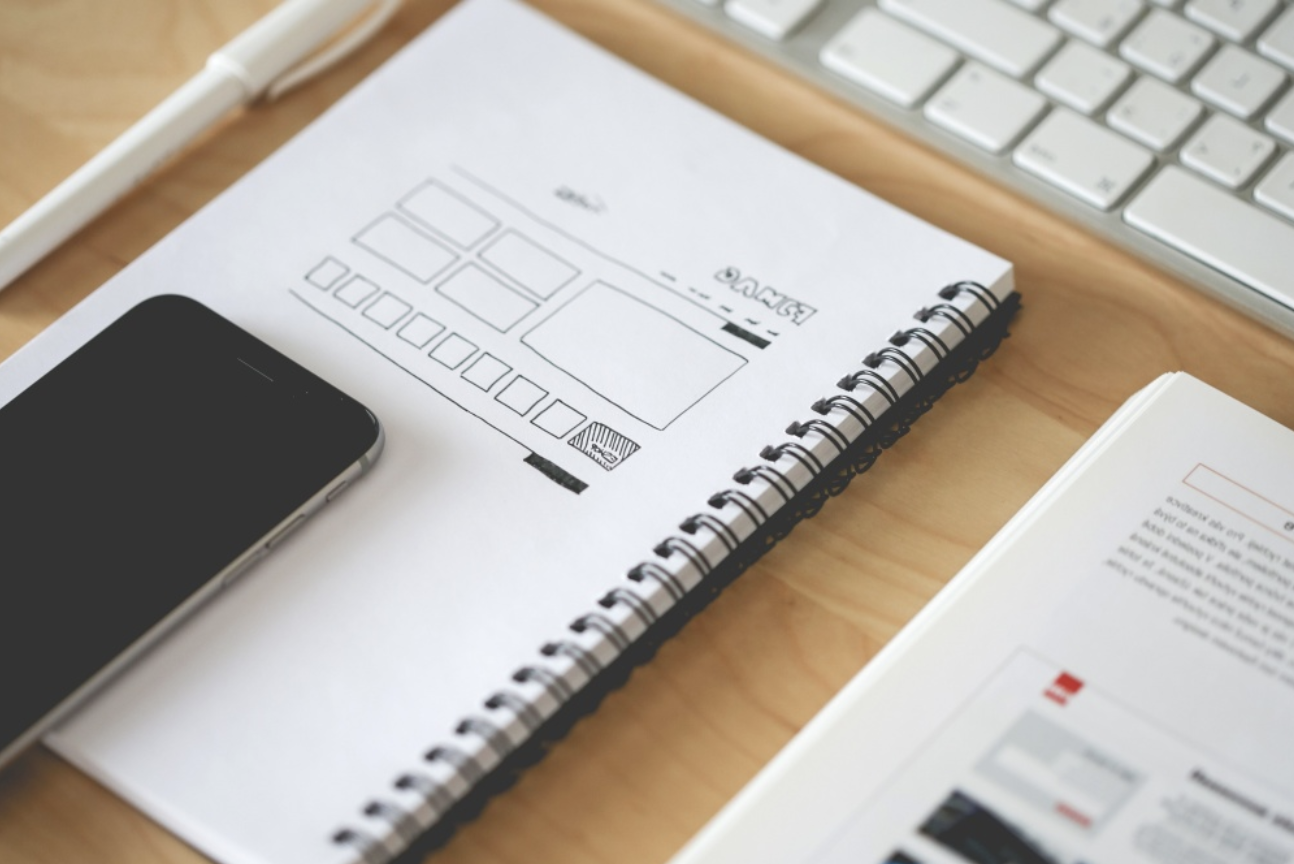
Creating a website design layout. Source: Pixnio.
Specific Types of Digital Designers
Digital designers can be broken up into several different categories. Let’s discuss them here:
Graphic Designers
While the term “graphic designer” is very general, for the purpose of this article we can think of graphic designers as digital designers working with static images. These designers might be creating an infographic, a report, or a digital illustration. Their main concerns are aesthetics, readability, and branding.
Web Designers
Web designers focus on the layout of websites, and may also design some of the interactive elements that appear on them. They should have a basic understanding of coding and the functionality of websites or apps. Web designers need to understand the prevailing trends in web aesthetics, and they also need to consider accessibility and ease of use.
UX Designers
UX designers focus specifically on usability. Among other things, they design preliminary plans for websites, apps, or products (known as “wireframes”). UX designers are often expected to collaborate with researchers and to create several different versions of their designs for testing with real users. Their designs should be primarily based on data, as well as aesthetics.
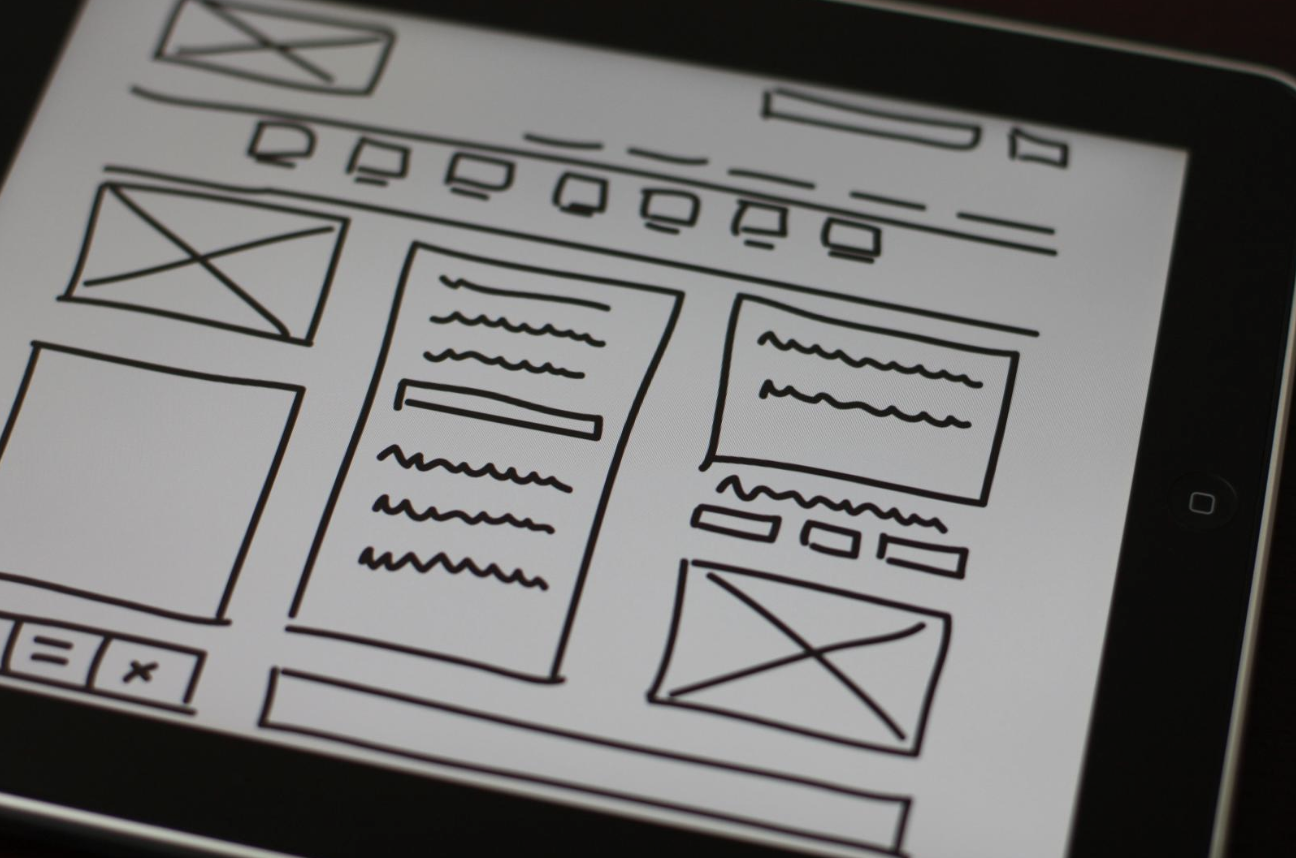
A UX wireframe. Source: Baldiri, Flickr.
What Does a Digital Designer Do in a Typical Day?
Now that you’ve learned how digital design is different from print design, let’s talk about what it’s like to be a digital designer. If you are thinking of becoming a digital designer, this section can help you decide what kind of lifestyle you would like to pursue.
Digital Design Freelancers
Some digital designers work as freelancers. These designers take on their own clients. They are solely responsible for structuring their workday, finding clients, invoicing, and other tasks related to running a small business.
A day in the life of a freelance digital designer might look like this:
Workplace
One of the great things about working in digital fields is that the work can be done remotely. As a freelance digital designer, you will have a lot of choice when it comes to your workspace. You can work from a home office, a co-working space, a cafe, or even from abroad as a digital nomad.
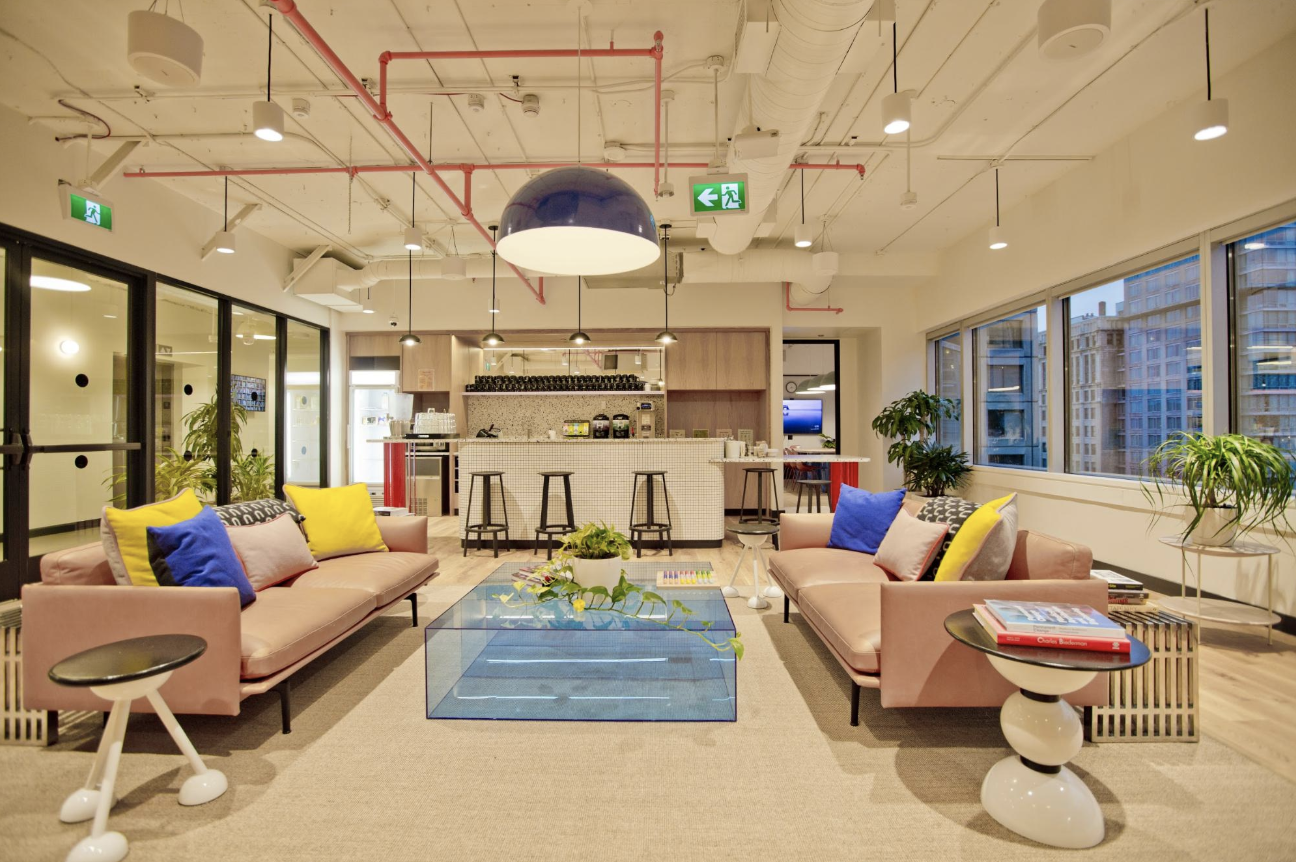
A coworking space in Vancouver. Source: GoToVan, Flickr.
Client Work
Most of a freelance digital designer’s day will be taken up by client work. This could mean working on long-term contracts (for example, collaborating with a client to design their new website) or one-off projects (like creating a single infographic).
Administrative Responsibilities
As mentioned above, being a freelance digital designer involves some administrative work. This might include:
- Creating and maintaining a portfolio website
- Reaching out to clients through job boards or cold emails
- Networking
- Creating and sending invoices
Positive Points and Main Challenges
Becoming a freelance digital designer is a good option for someone who enjoys variety and challenge, has good sales skills, and can tolerate a relative level of financial risk.
If you prioritize stability, or find it difficult to motivate yourself to work on tasks, then being a digital design freelancer might not be the best choice for you.
Working at a Design Agency
Design agencies, marketing agencies, and web development agencies often hire designers to work as part of a team serving outside clients.
Workplace
Design agencies may be small startups or large enterprises. Most hire full-time employees to work in-office. Increasingly, some agencies are also choosing to work with remote teams.
Responsibilities
As a digital designer at an agency, you’ll spend most of your day working on client projects.
When you’re not doing client work, you may spend time on professional development, internal design projects, or—if you’re in a senior position—managing other designers.
Positive Points and Main Challenges
Design agency positions tend to be fast-paced and offer an exciting range of challenges and responsibilities. At an agency, you will get to work with many different clients, often in a variety of industries. This makes agencies a great place to learn more about the world of design.
However, because of their profit margins, agencies sometimes offer lower pay than in-house positions (of course, this doesn’t always apply—the specifics depend on your job).
In-House Digital Designers
“In-house” digital designers work directly for a company, designing their products or creating marketing materials and other assets. In-house designer roles are more likely to carry a senior-level title (like “creative director”), or a title that requires a specific technical skill set (like “UX designer” or “product designer”).
Workplace
As with agency work, in-house designers generally work full time at their company’s office, although some companies may also hire remotely.
Responsibilities
As an in-house designer, you will spend all your time working on your company’s projects. You will be responsible for helping your team execute its vision, and ultimately driving the success of your company.
Positive Points and Main Challenges
While in-house design has a reputation for being more repetitive than agency work, of course this isn’t always true. As an in-house designer, you’ll have the chance to explore a single type of work more deeply, and can become more invested in the success of your company. An in-house position can provide a great opportunity to deepen your design knowledge in a specific field.
Get To Know Other Design Students
Pete Bruno
Product UX Designer at Service Management Group
Talayeh Motameni
Senior UX Designer at United Airlines
Jeffrey Surban
UX Designer at Citi
Average Salaries for Digital Designers
You’ve now seen that there are many different ways to build your career as a digital designer. With that said, what is the average digital designer’s salary?
Salaries can vary widely based on specialization, of course. Most freelance graphic designers charge anywhere from $15-$65 an hour (according to PayScale), while senior UX designers can make up to $137,000 per year.
That said, PayScale reports that the salary for digital designers of all kinds in the U.S. ranges from $39,000 to $79,000 per year, with an average of $53,855 per year.

Screenshot showing the average digital designer salary. Source: PayScale.
Related: The State of UX Salaries in 2019
Digital Designing Courses and Education
As an aspiring digital designer, there are many routes you can take to meet your goals.
While some technical schools (like the New Jersey Institute of Technology) offer general digital designing courses, most schools subdivide digital design into other labels, like “graphic design,” “web design,” or “UX/UI design.”
If you’ve decided that digital design is the career for you, it may make sense to get specific about the field you want to work in, and then search for degrees, online courses, or offline bootcamps that provide a strong mix of training and practical experience in that field.
Since you’re here
If you want to work in design, you can. It’s that simple. With our UX Design Course, you’ll launch your career in design in 9 months or less – guaranteed. Browse our free UX salary guide to see what you could be making



